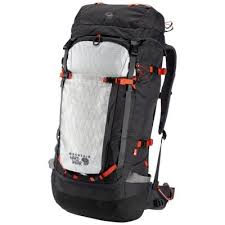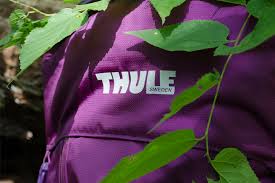backpack pivoting hip belt

Return to search results South Col™ 70 OutDry Backpack Early access to sales Invitations to member-only events and promosReview of: Women's Thule Guidepost 65LBackpack: Version:PlumPrice:$330.00Rating:Summary:Comfort is important when backpacking. Nothing is worse than an ill-fitted backpack weighing you down on the trail. Being able to custom fit your backpack to your body is one of the most important assets to a backpacker’s comfort, and as far as adjustments go, the Thule Guidepost has it all. Adjustment was a key focus in the designing of this bag. Not only does the Guidepost have a thickly padded, pivoting hip belt that comes in three sizes, but also padded shoulder straps with three different width settings. The most remarkable aspect of the adjustment system is the six inches of adjustability to fit the torso. Whether you are petite or big boned, you can find your fit with this bag. However, the thick padding and extensive aluminum and plastic support system does come with a cost.

The Guidepost is slightly heaver than other 65 liter packs, weighing in at 6 pounds. This bag is better suited for the maximalist, as it has many unique features that add to its weight including a top compartment lid that converts to a summit pack. While handy for a quick assent, not everyone would opt to carry the extra weight of a summit pack. Here are some essential features of the Thule Guidepost: -Two easy access cupholders -Vertical zippers help you access gear that’s buried deep in the bag -Adjustable bottom straps can carry a sleeping pad -Two gear loops on front -Lid converts to summit pack -Attachment loops for hiking poles or ice axes -Pockets on hip belt for sunscreen, lip balm, protein bars, etc. The Thule Guidepost is well designed and comes in four colors: black and blue for men, and purple and grey for women. The nylon fabric and double zippers on the front gives it a sleek and modern look. The only design flaw is the lack of ventilation between the backpack and your back.

While some backpacks are designed to sit off of you back, this one must fit snugly to you back. This means on hot sweaty days your back is definitely going to be hot and sweaty, which can be uncomfortable when you’re on the trail all day. The Thule Guidepost was definitely designed with durability in mind. The bag is made with 210D Cordura™ Nylon and 315D Cordura™ Nylon. The back adjustment system is also extremely sturdy. While they did not skimp on any material in the design of this bag, the material used is extremely durable and not the lightest, which contributes to the heavier weight of the bag. This backpack is considerably more expensive than some leading brands on the market. Although extremely durable, this backpack is not light weight. Many other backpacks offer the same features as this pack at a lighter weight. However, the adjustment system of this pack cannot be beat. If you ever plan to share your pack with someone else, this pack could easily be adjusted to any size.

While some might come close, it is difficult to find as much adjustability as the Thule Guidepost offers. Own a piece of gear that you're dying to review? Read our submissions page and let's get it up on the interwebz! You may also like...Pocket HipbeltGoggle PocketTool PocketMountaineering PowderkegMountaineering BackpacksBackpacks SpotHiking BackpacksMhm PowderkegPack RefrenceForwardMHM POWDERKEG 32 Backpack- This backcountry snow pack features our VersaHaul carry system which allows 4 way ski carry and 2 way snowboard carry.
kamino backpackOther features include backpanel access, dual pivoting/adjustable hipbelt, lined goggle pocket, hipbelt pockets and a large front tool pocket.
teton backpack 3400In late 2012, a photo backpack from startup Mindshift Gear raised more than $130,000 in a Kickstarter campaign, far above its $30,000 goal.
backpack4u
It won crowd favor because of a design that addresses the needs of the traveling or hiking photographer with two distinct compartments — one with easy access to photo gear in a hideaway hip belt, and another for gear, clothing, hydration, or other travel essentials. We tested it over the past month, including on two trips, a photo shoot at a race, and during a hard backcountry hike down a river in Vermont.
whyatt 16 inch backpack turquoise and blue The heart of the pack (full name: Mindshift Rotation180° Photo Backpack) is a rotating hip-pack that is hidden but pivots out from the main pack body when needed for quick access to a camera and lenses.
mono civilian backpackYou do this without removing the main bag from your back.
motio laptop backpack
At $389.99, the Mindshift is a big spend. But for a photographer in need of near-instant access to a camera while on the move the pack could prove invaluable. I worked for years as a photojournalist. To me, the Mindshift hits the nail on the head — the design works really well, including an easy rotation move to scoot the hip pack out of the bottom of the pack and around front.
top 10 goedkoopste backpack landen When not deployed, the hip compartment sits out of the way inside the main compartment, and the pack functions much the same as a model from a high-end outdoor brand. The pivoting hip-belt pack is large enough to carry a single DSLR body with a large lens (or a regular lens attached and one or two extras). Add a small flash, pens, and a notebook in the small pockets and you have all the gear a photographer or photojournalist should need. The hip-pack can be used in conjunction with the main pack or removed for a simple (if a bit bulky) hip-carry camera bag.

The entire package fits in the overhead compartment of an airplane. Coupled with a computer bag, I was able to avoid checking luggage while hauling camera gear for the long weekend on two recent trips. During my trip to Vermont, I was able to carry enough camera gear for basic photojournalism work, including a Nikon body, a 24-70 2.8 lens, a 50mm 1.4 lens, and a flash. To give the bag a real outdoors test, I carried it with all my gear for the weekend while on a timber-whacking hike along a Vermont stream in search of a waterfall. I carried the pack for several hours over slippery, moss-covered boulders, up steep hills, and through dense undergrowth. The pack was comfortable for every step even loaded with about 30 pounds of clothing and camera gear. Whenever I felt like snapping a photo, I just unhooked a quick-latch device, pivoted the hip-belt around so the camera pack faced forward, and pulled out my Nikon. The whole process took about 15 seconds without removing the pack from my back.

The pack is versatile. The belt pack holds a pro-size DSLR and two lenses, or a common 70-200mm f2.8 attached to a body. Additional photo equipment, such as a spare body, flash, and up to five lenses, can be stored in the upper compartment’s removable camera insert. For minimalist excursions the padded insert can be removed and the pack can be filled with other outdoor gear. It has about 2,300 cubic inches in total storage space. This equals a mid-size pack, and once loaded with all my camera gear there’s not a ton of space left over — enough room for food, water, and extra clothing on a day hike, but for an overnight trip with a shelter I’d be harder pressed. But the Mindshift is made for hiking, not backpacking. It has a waterproof rain cover and large side pockets that hold up to a 3-quart hydration pack (or a pair of wet running shoes, as was my case in Vermont). Overall, the pack is a great product for the serious photographer who travels regularly and wants the versatility of carrying either a heap of camera gear or camera gear and clothing in a single, carry-on size bag.